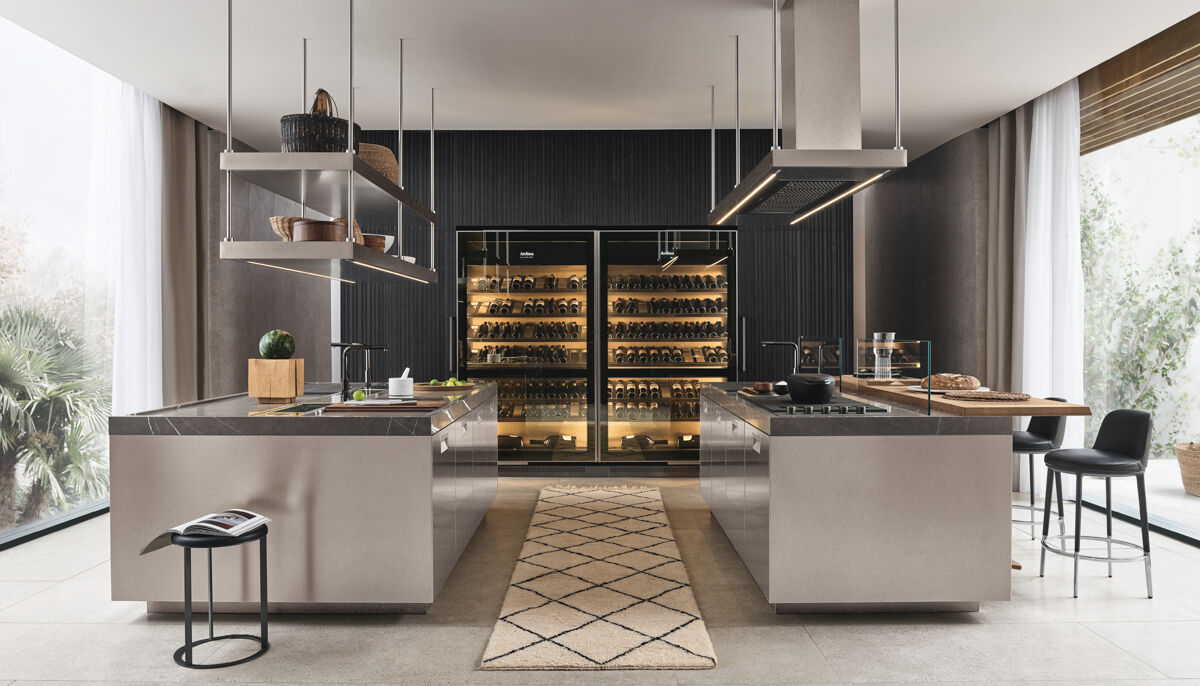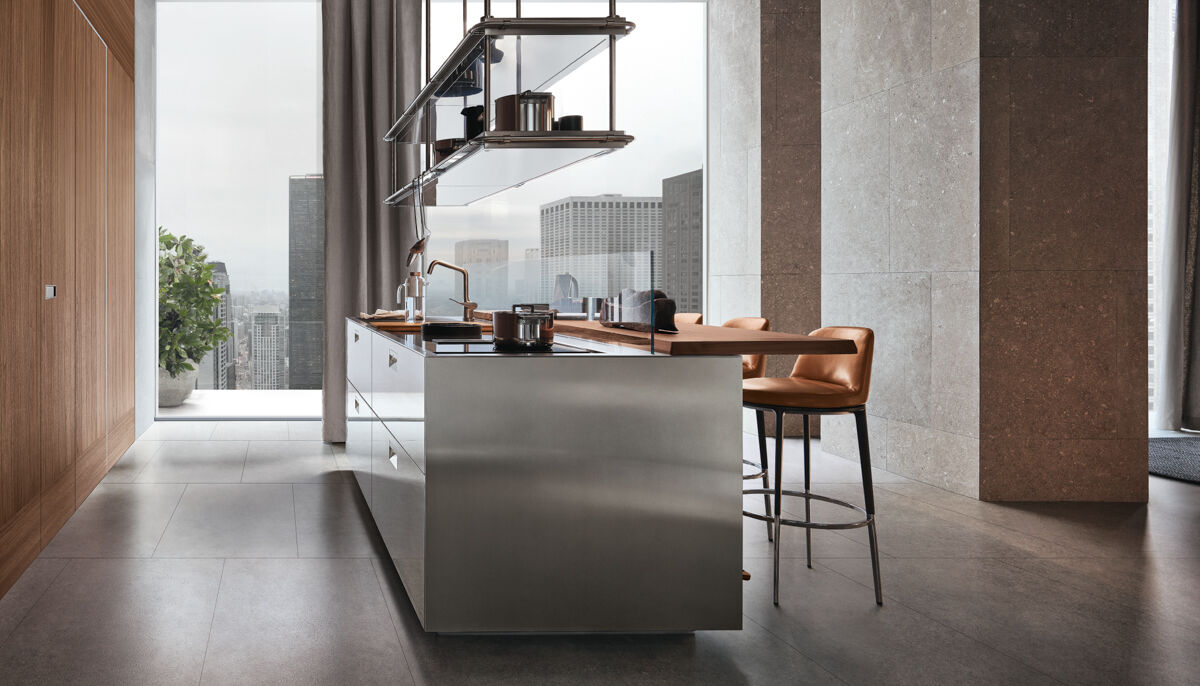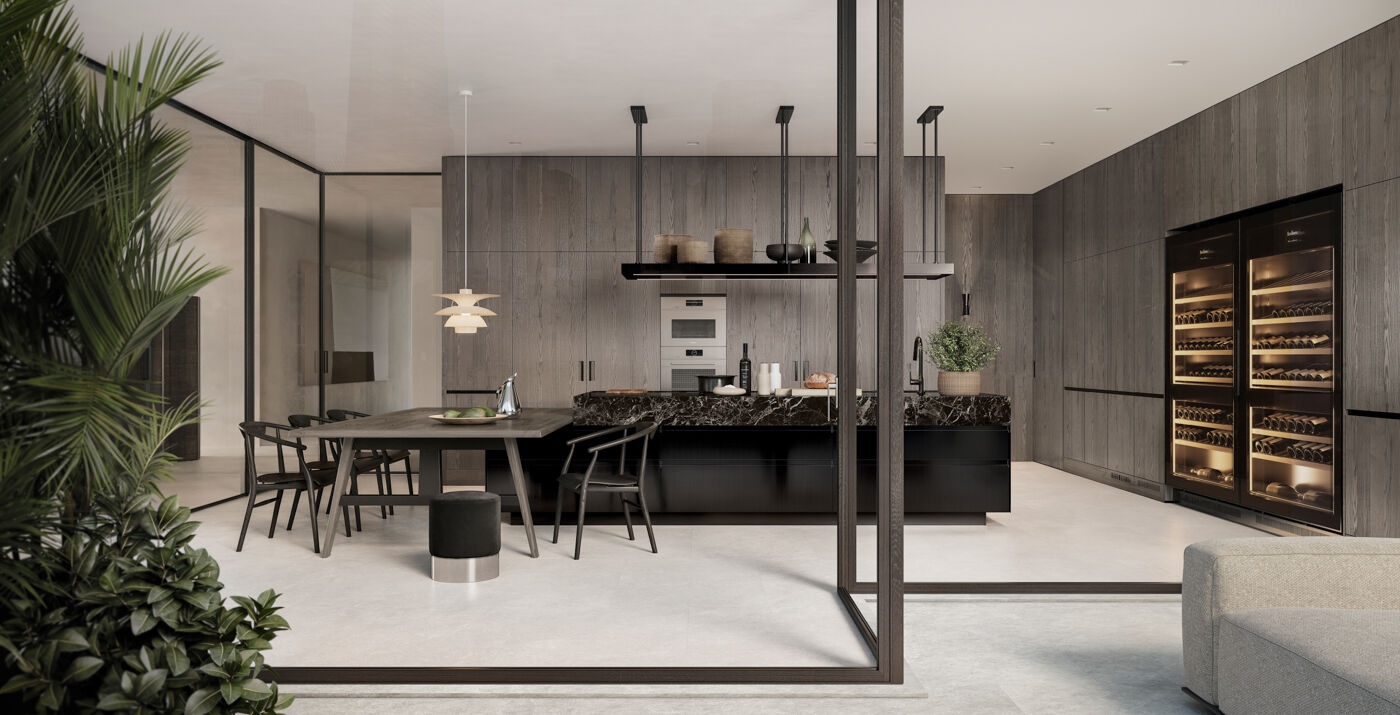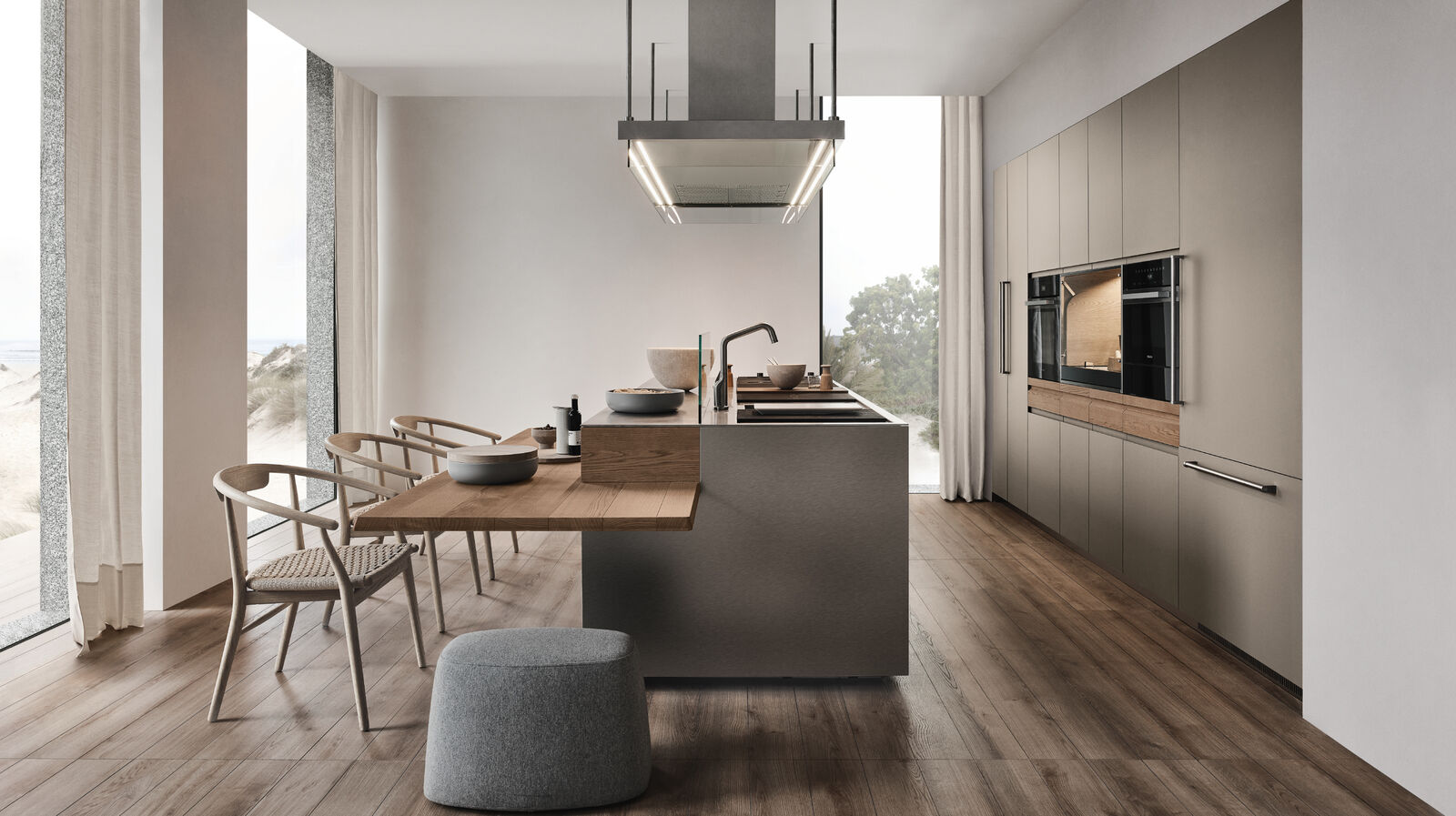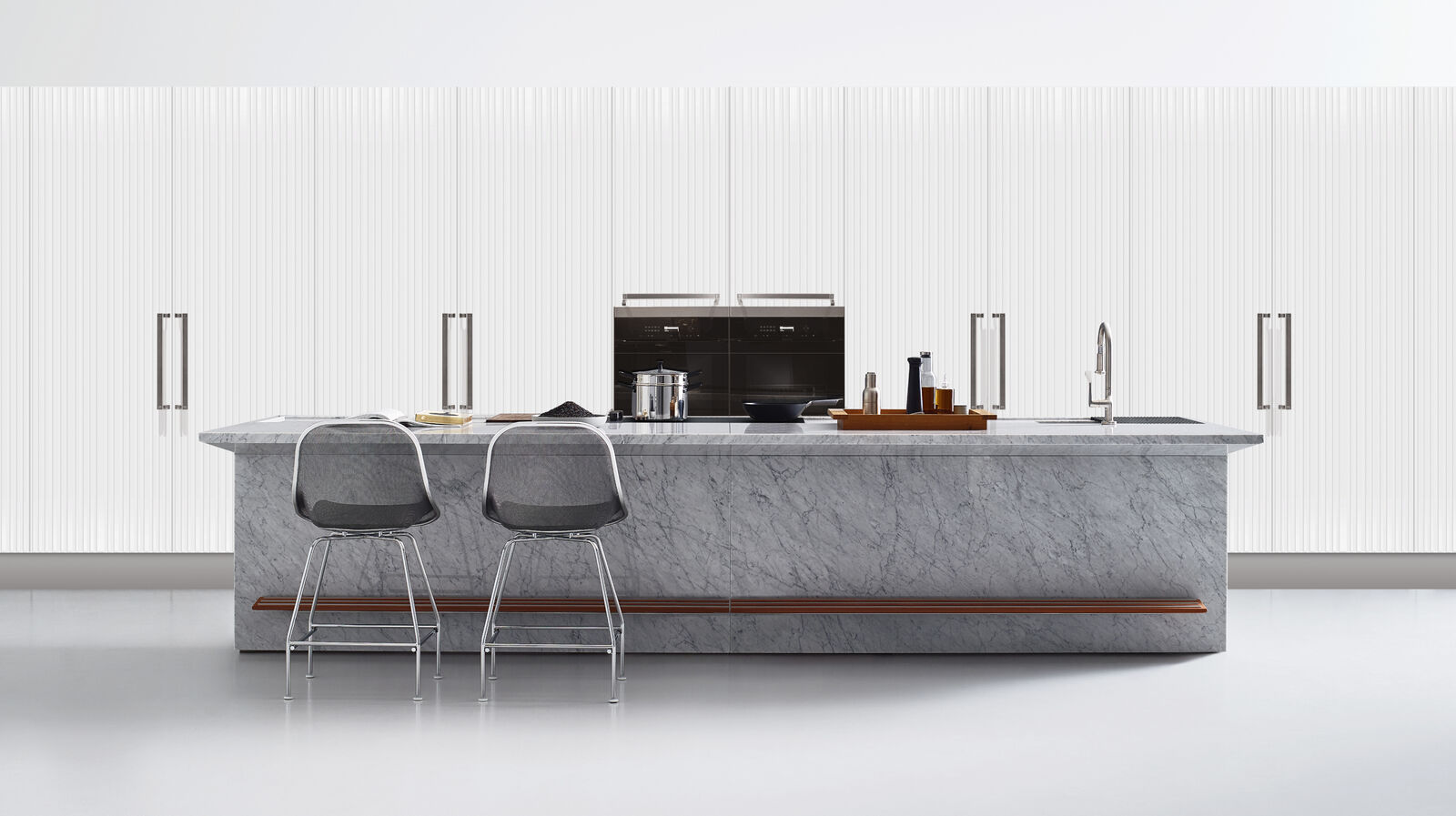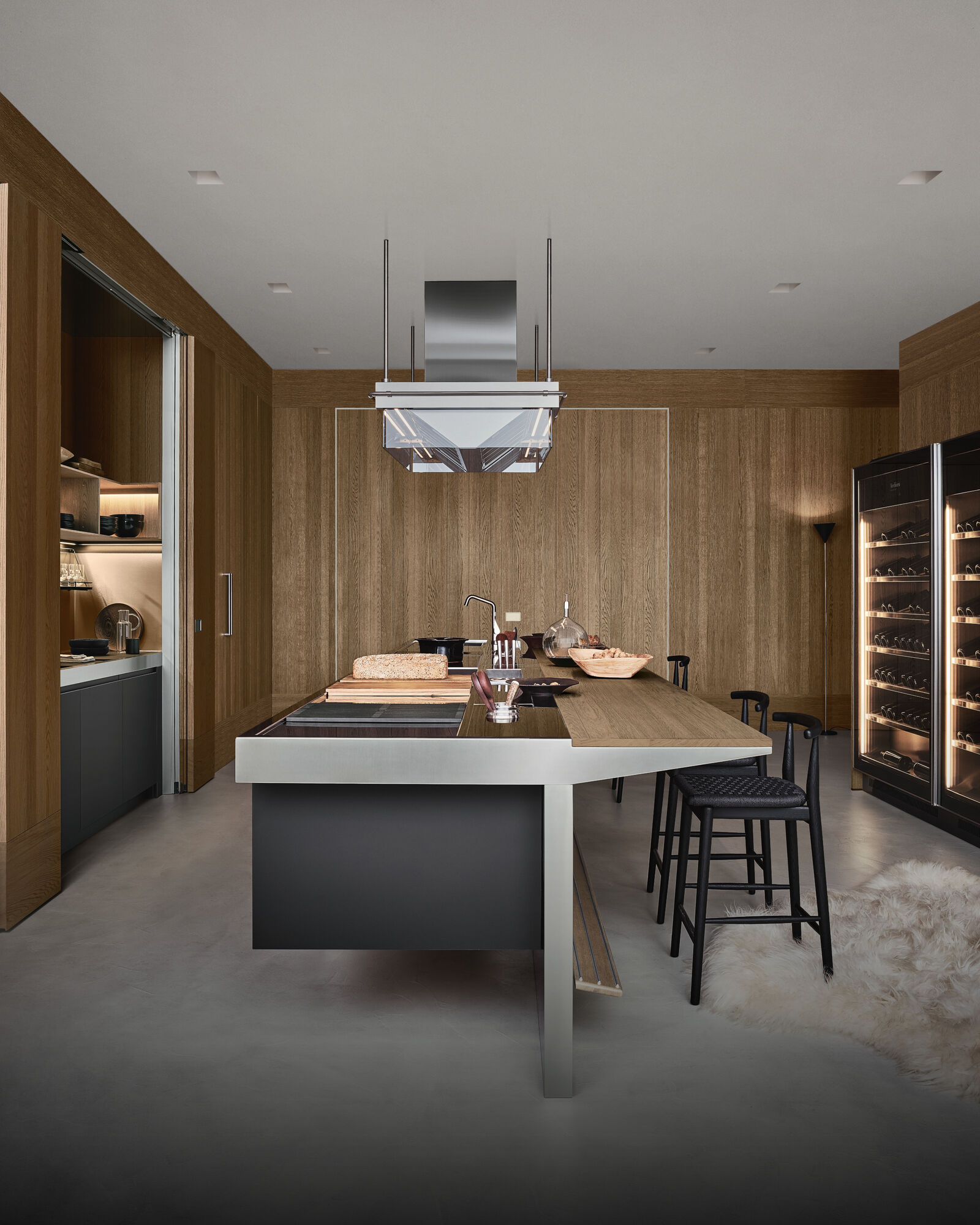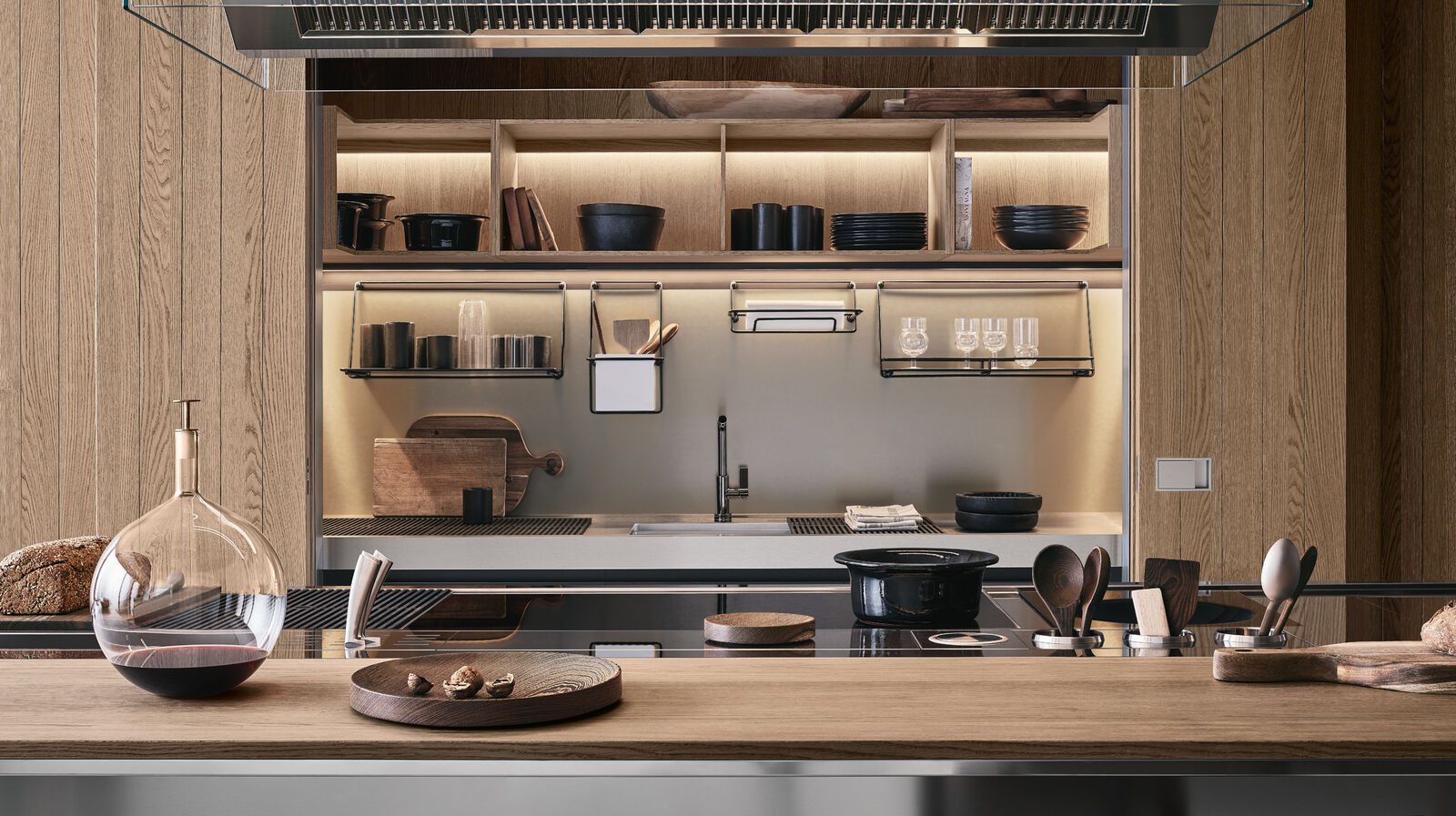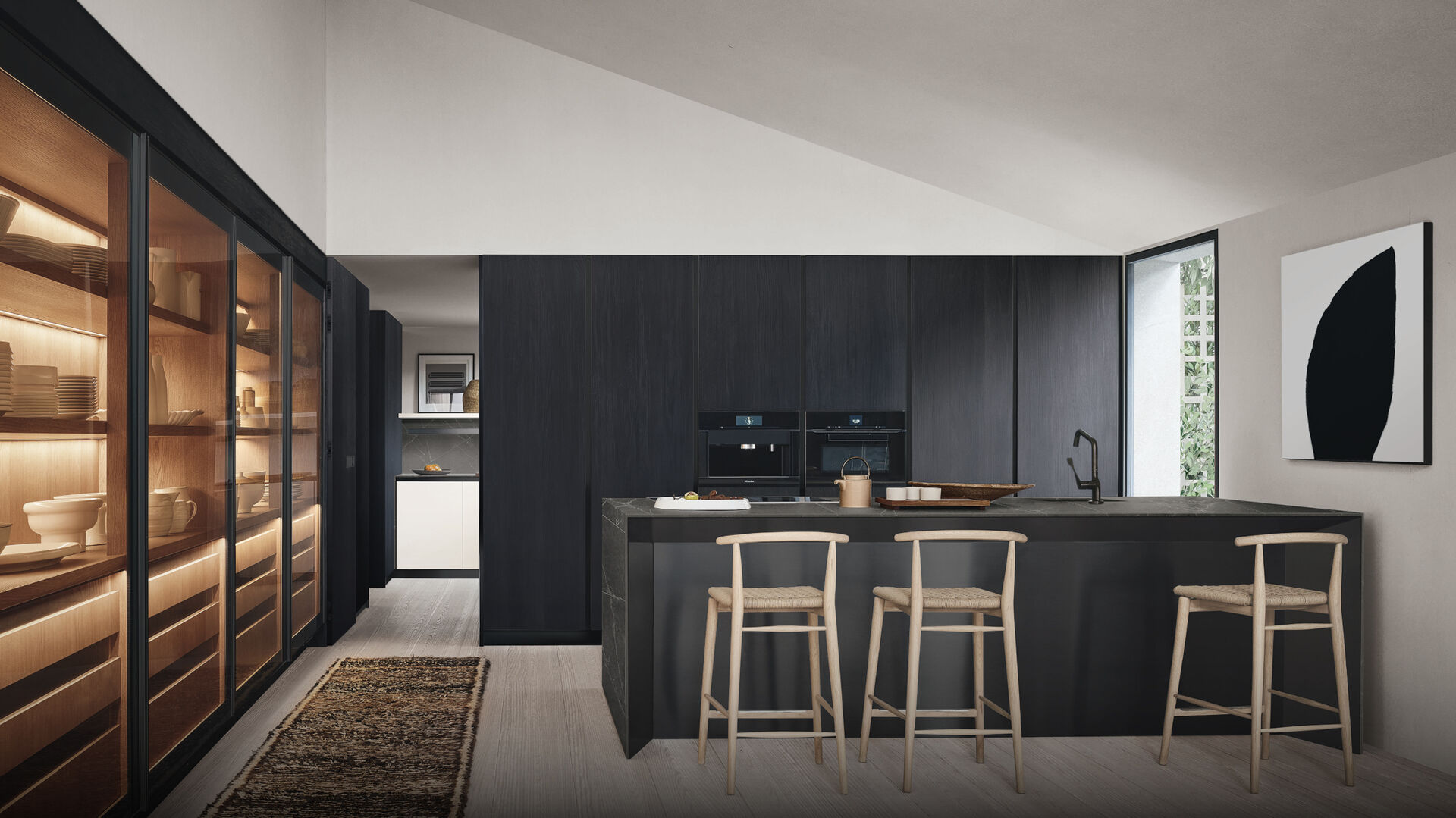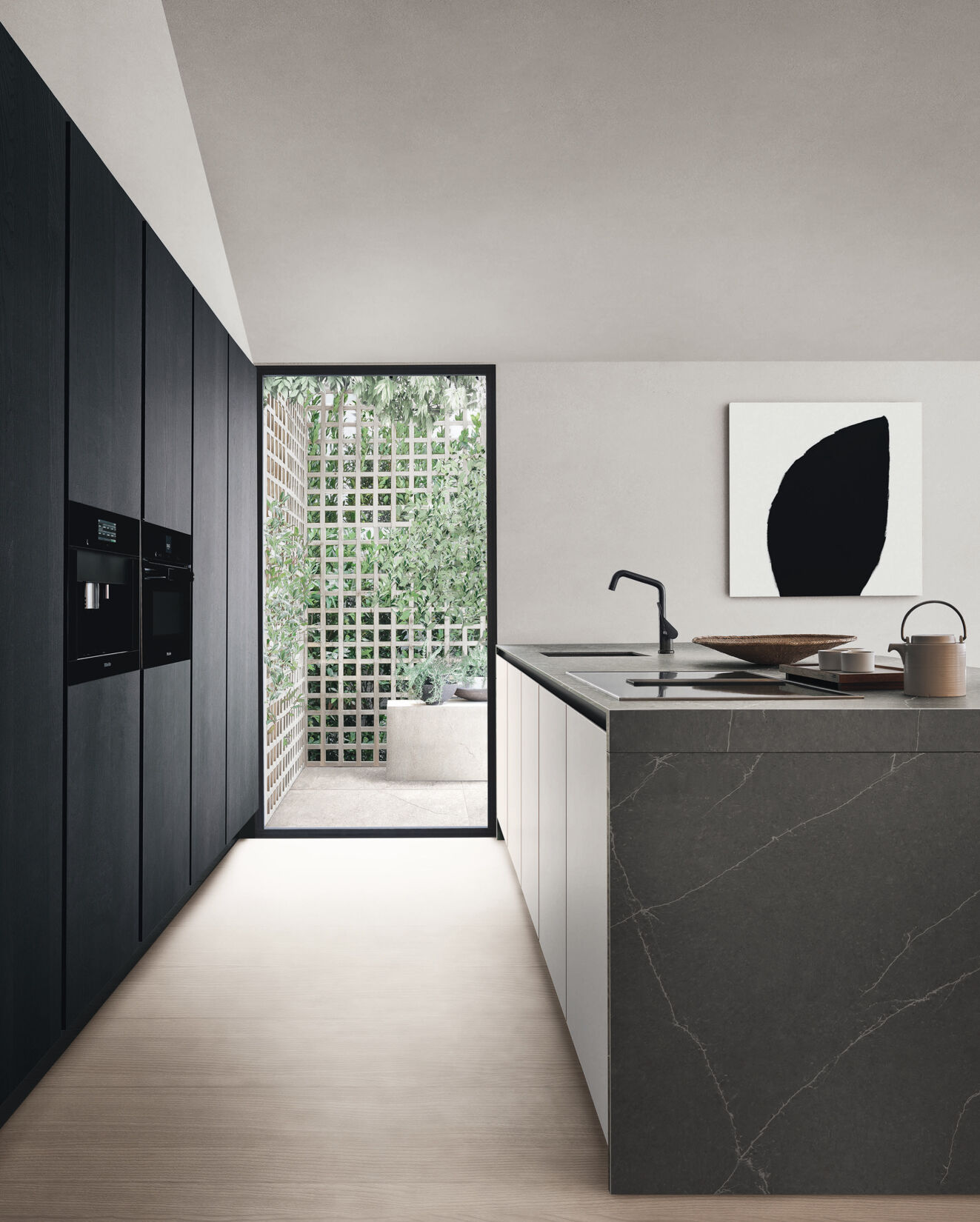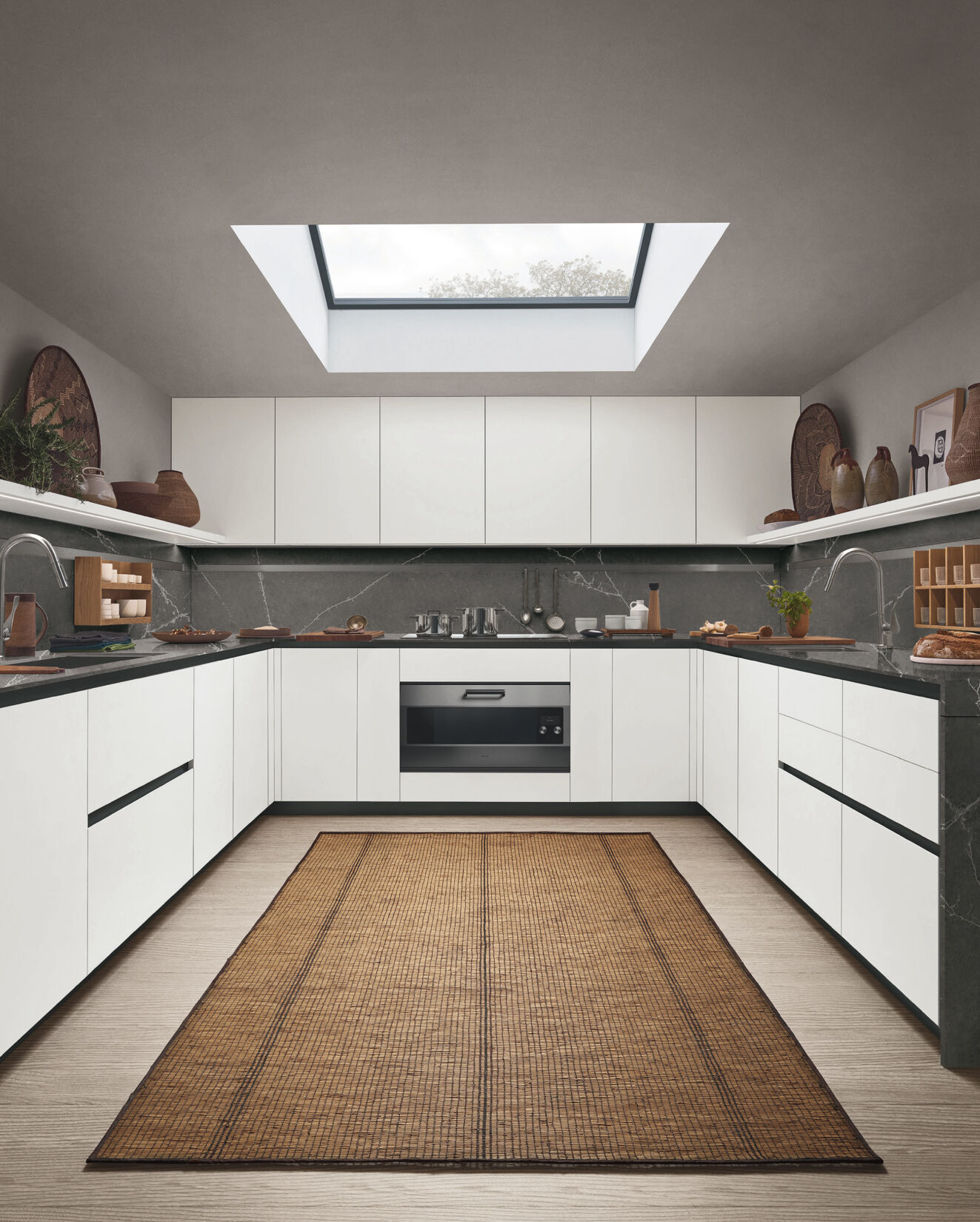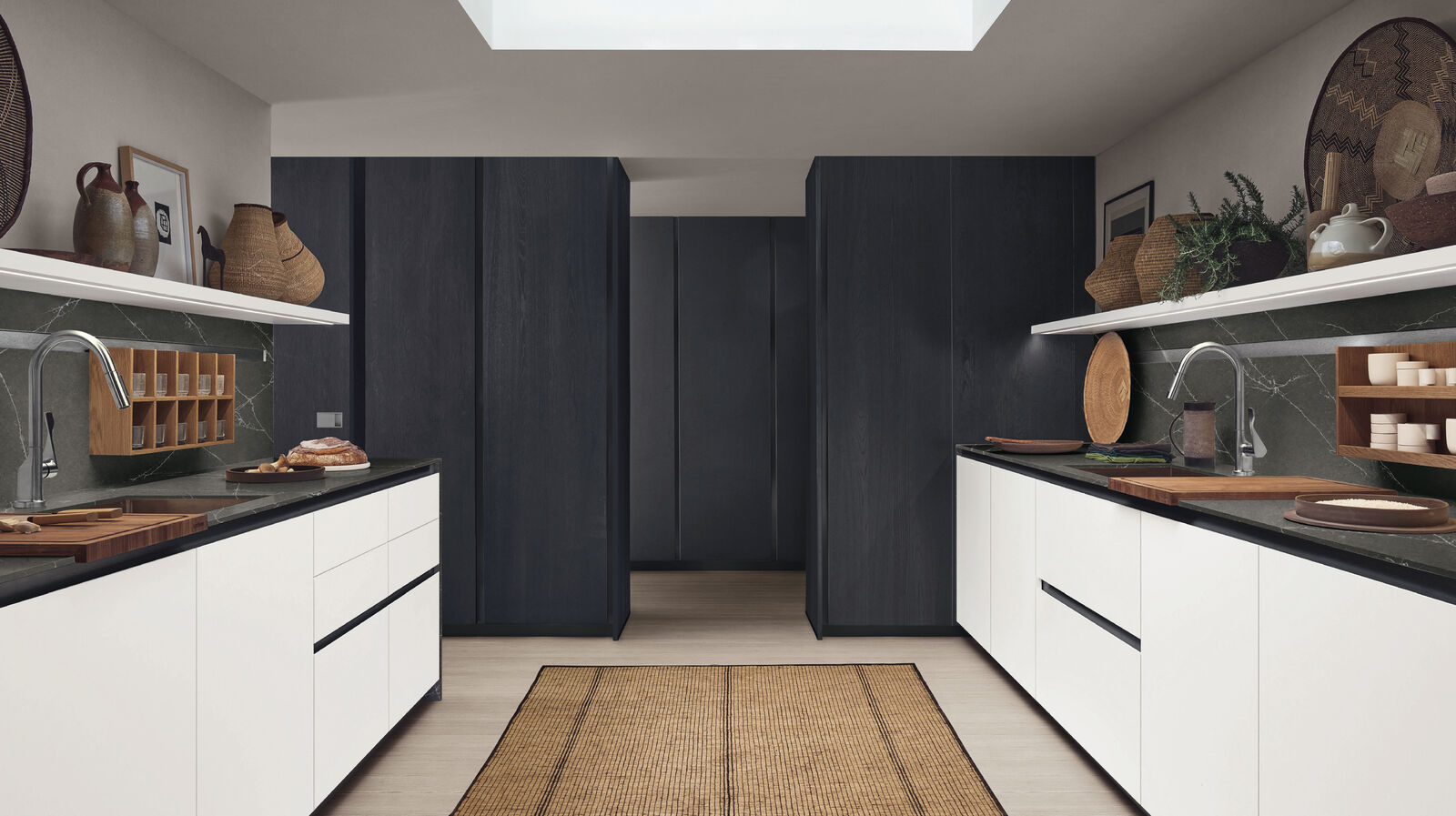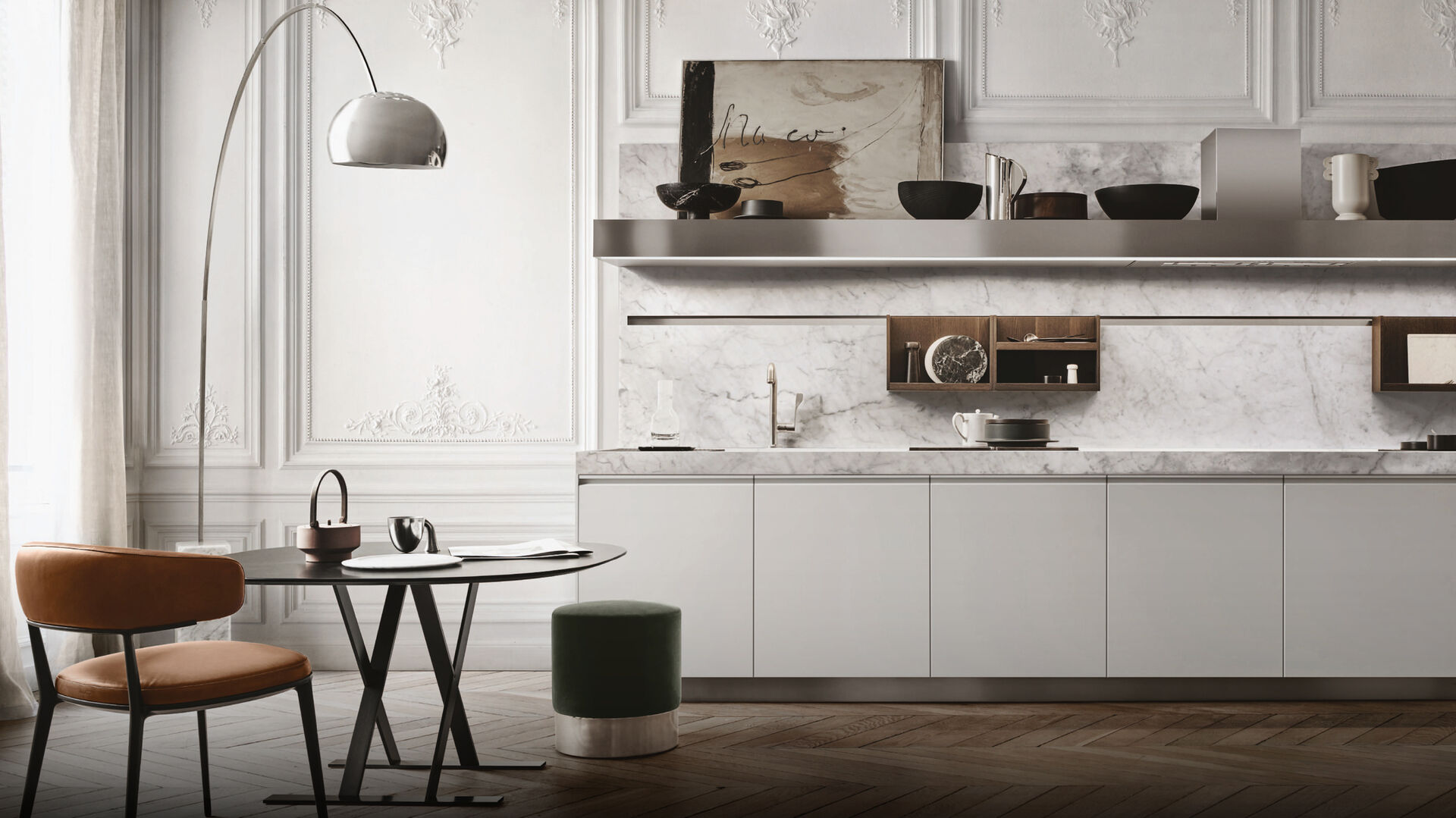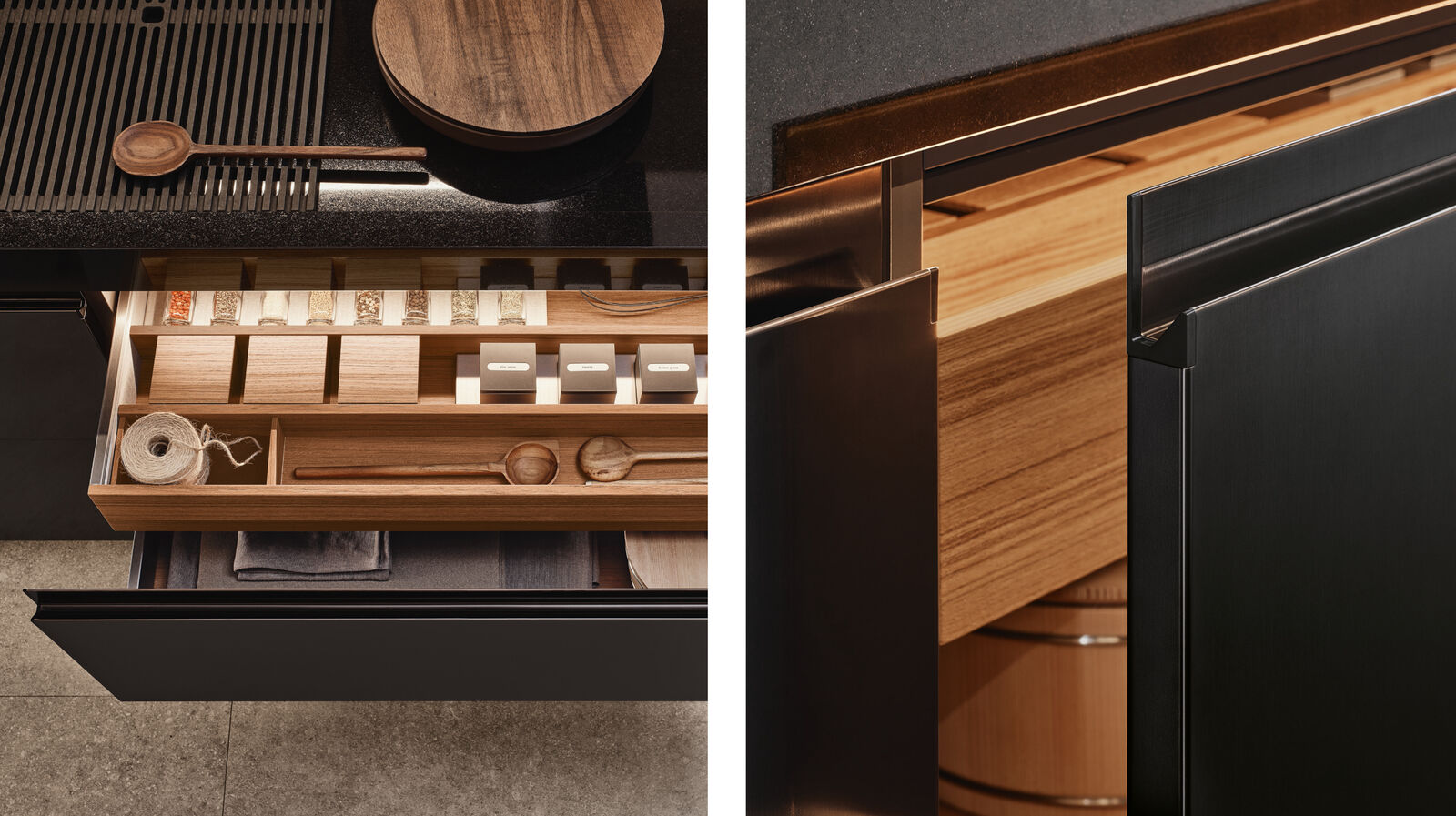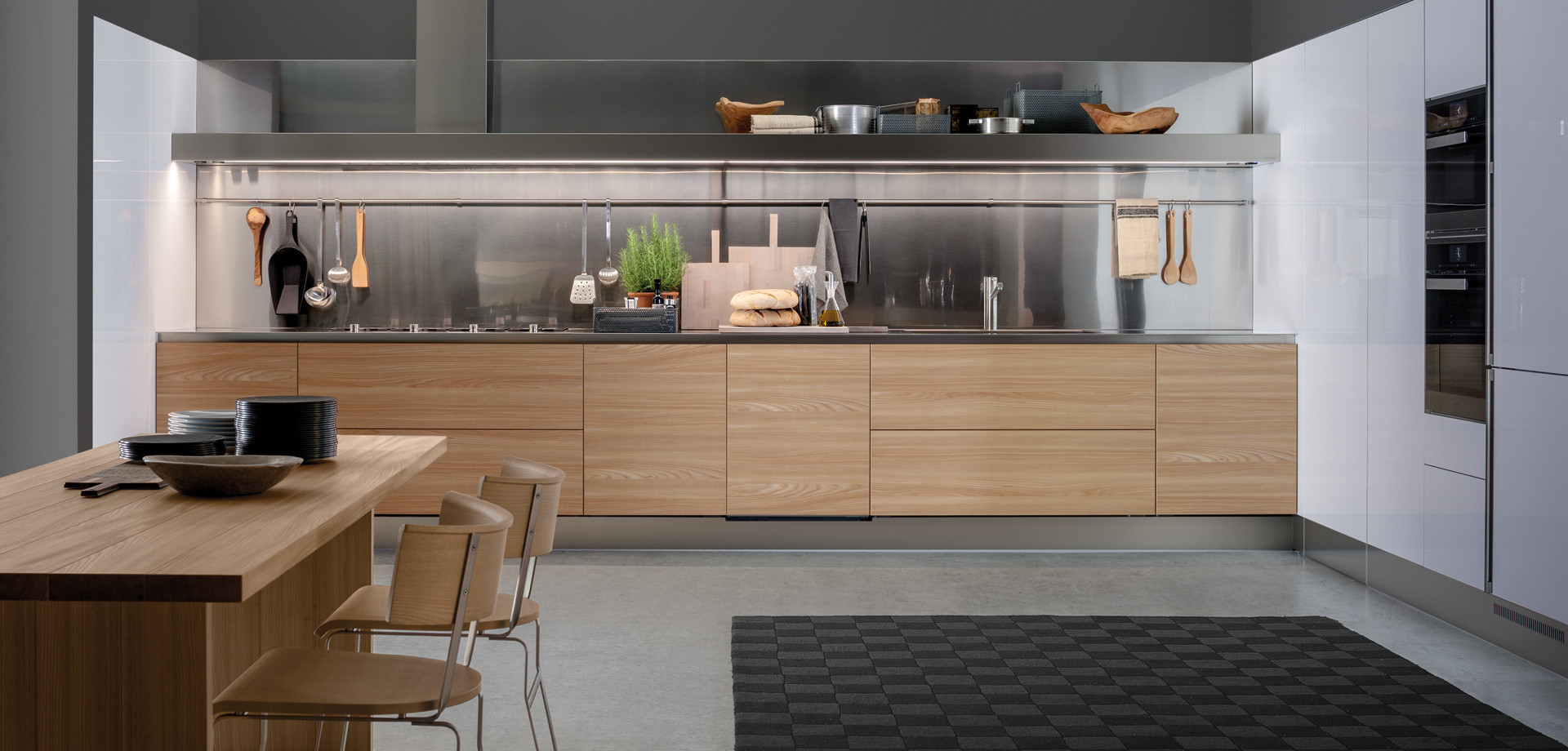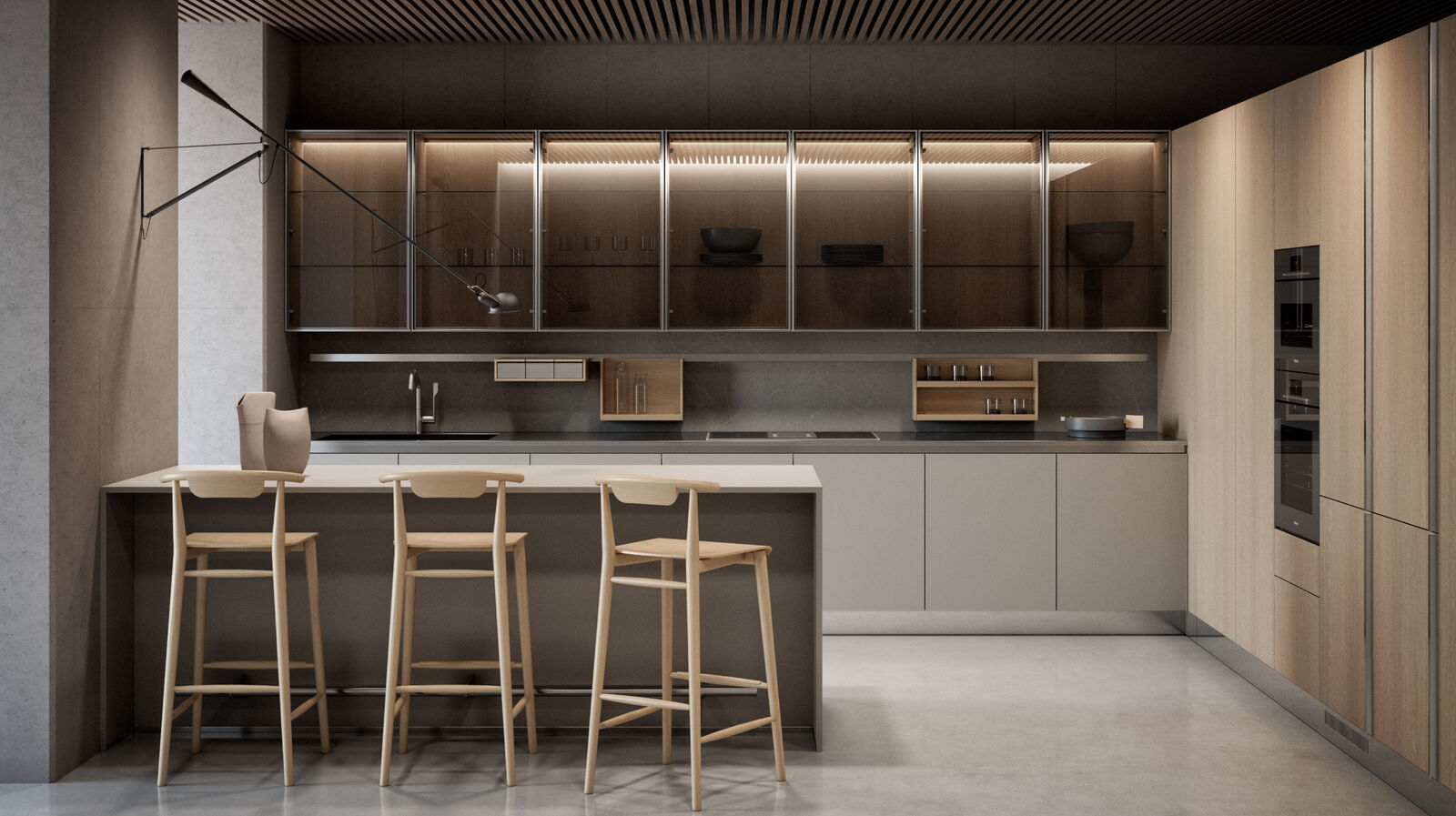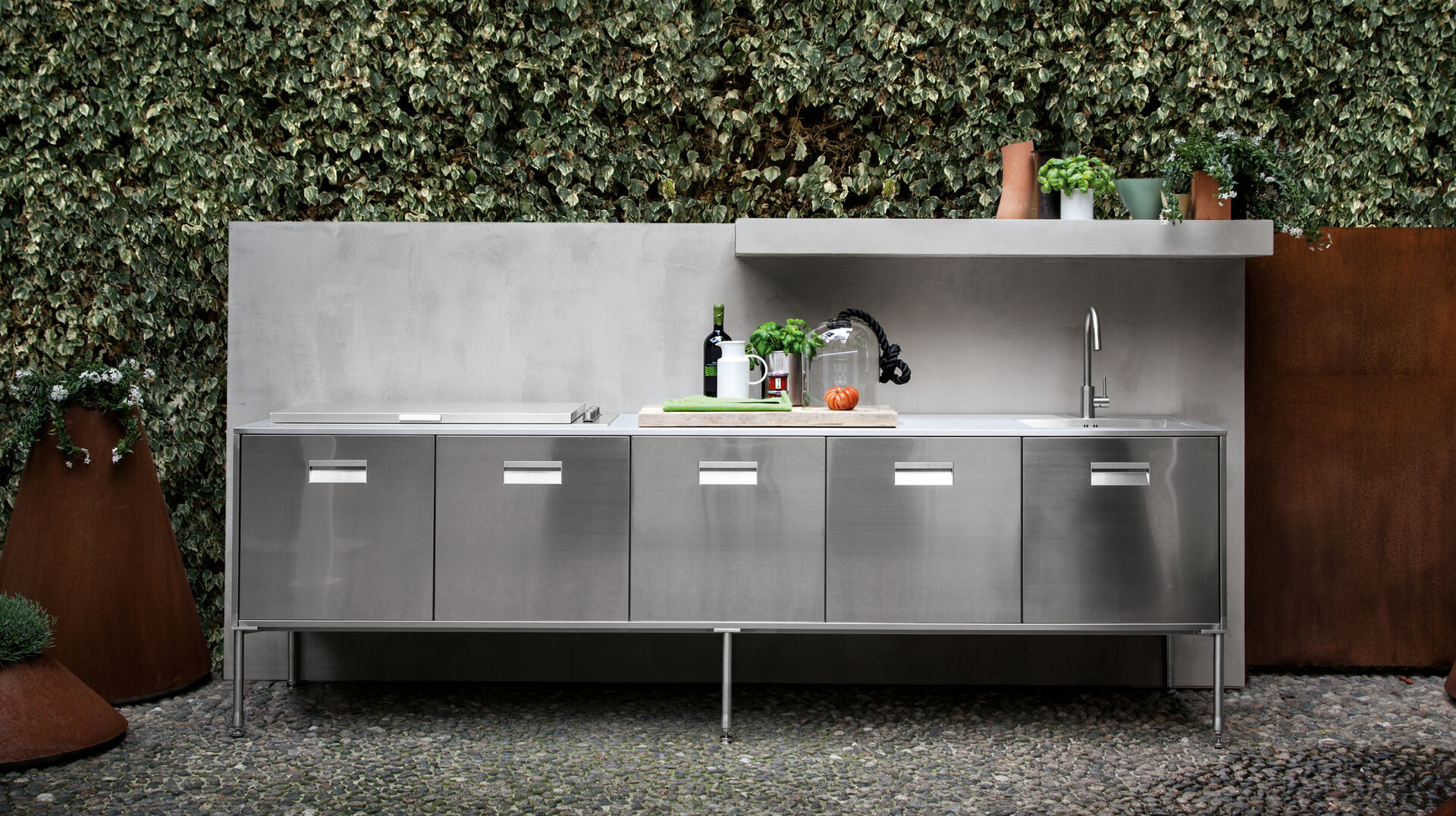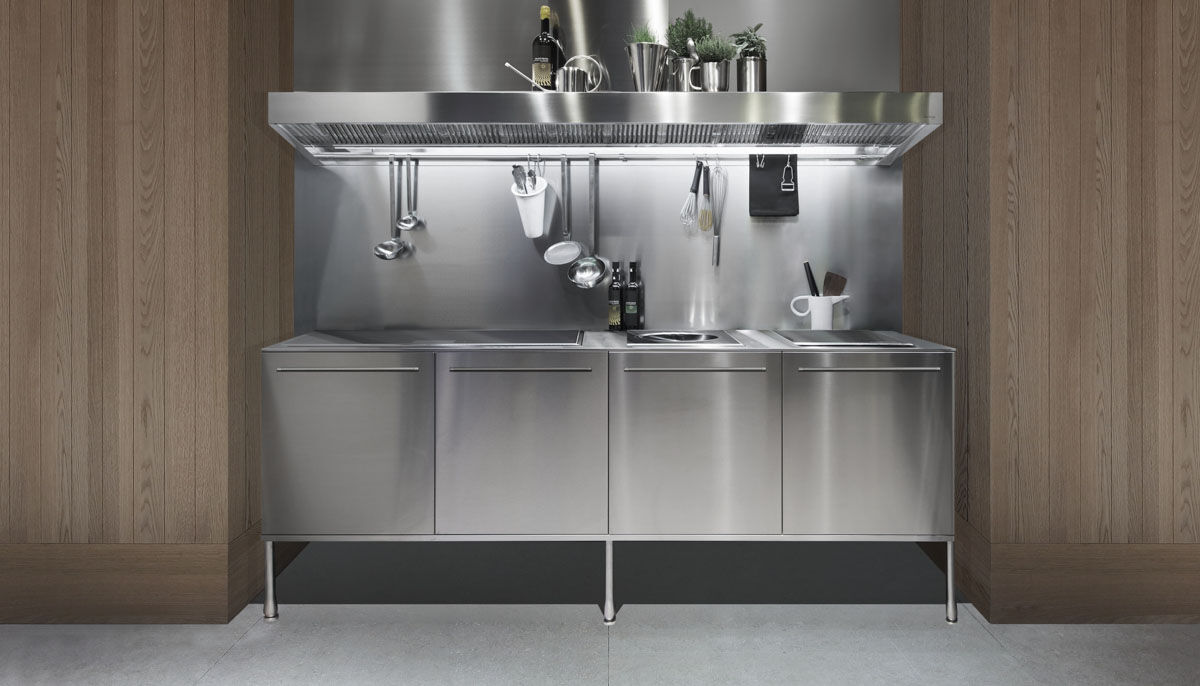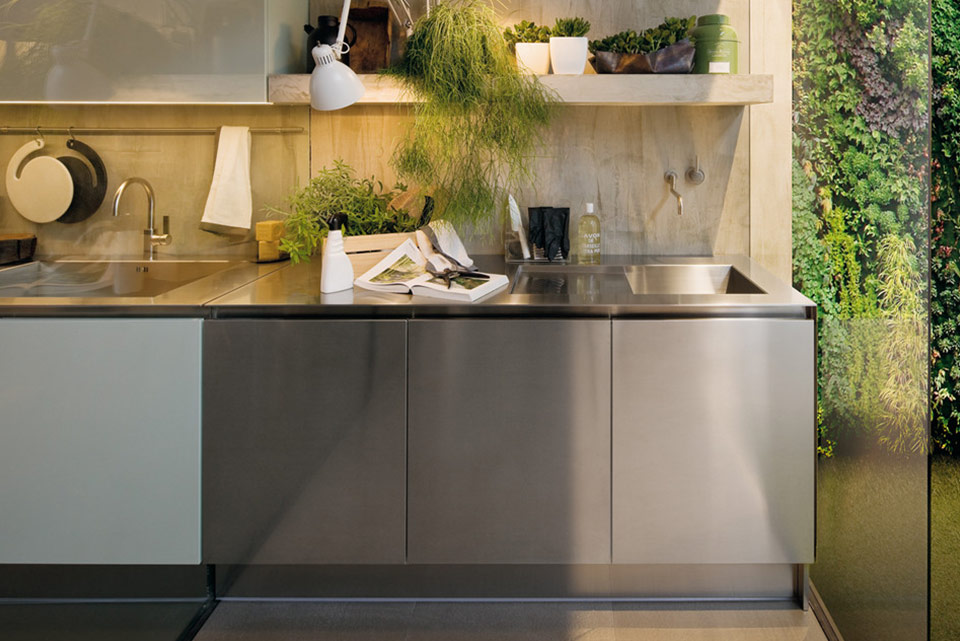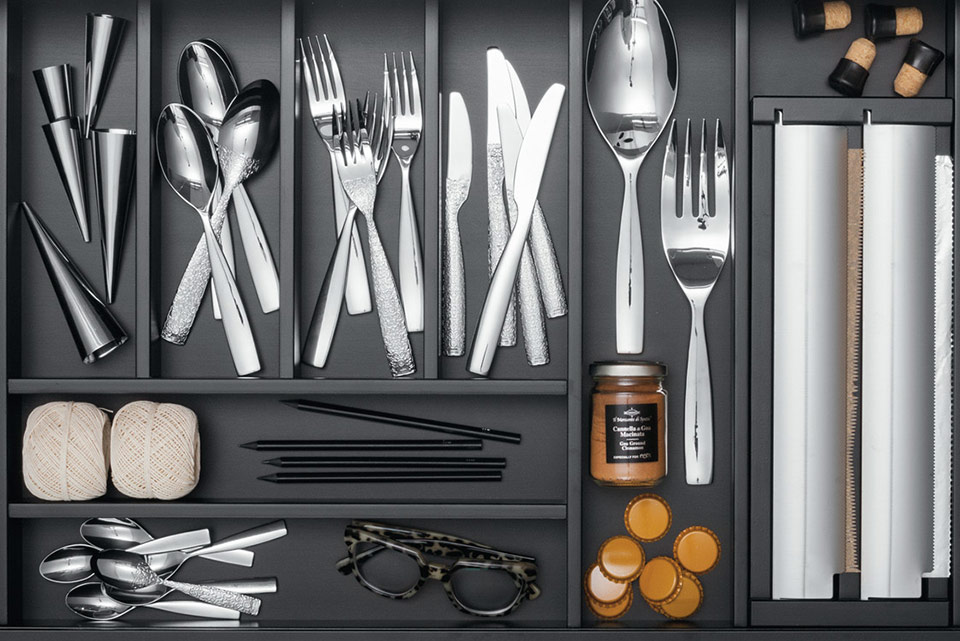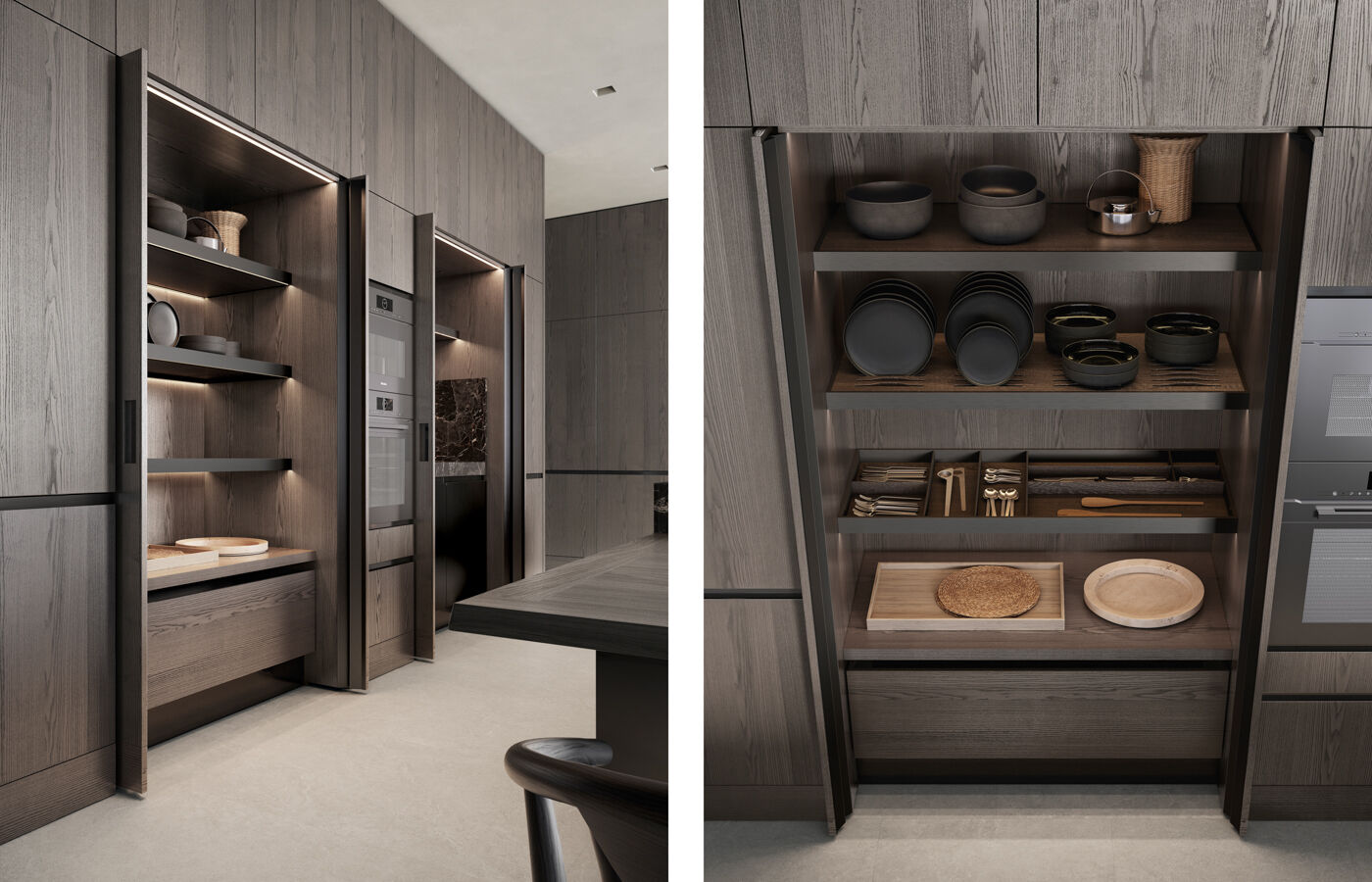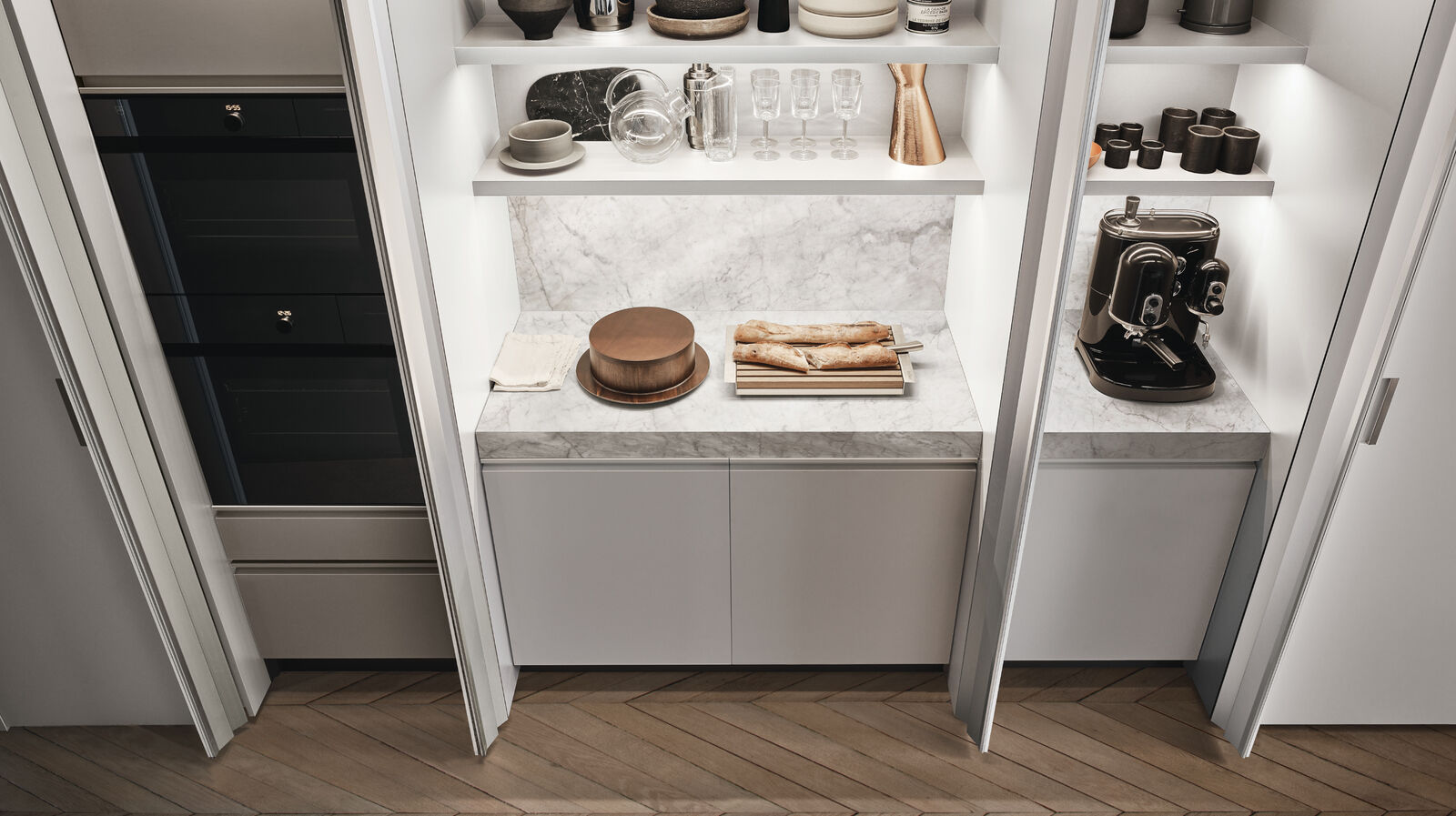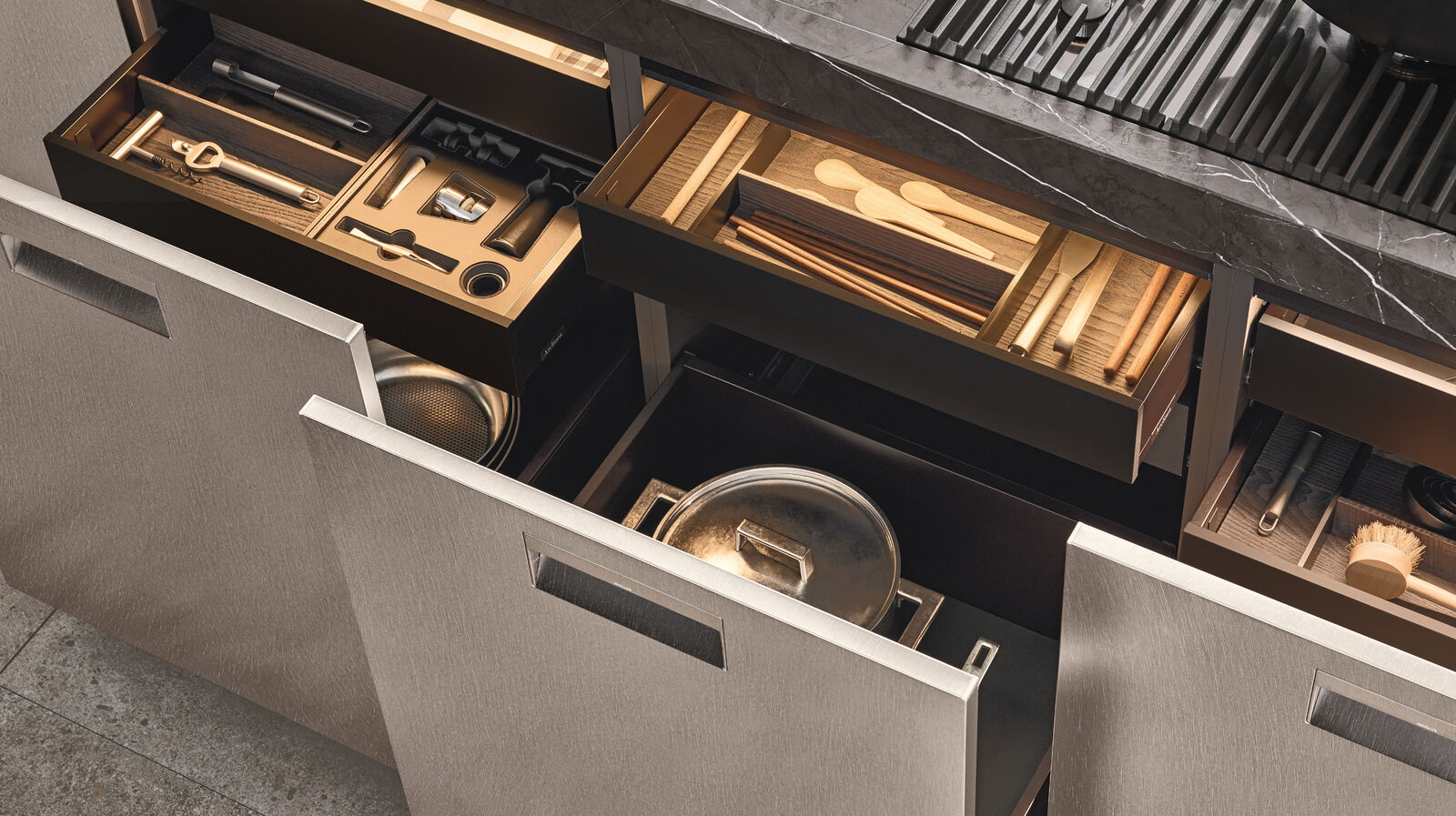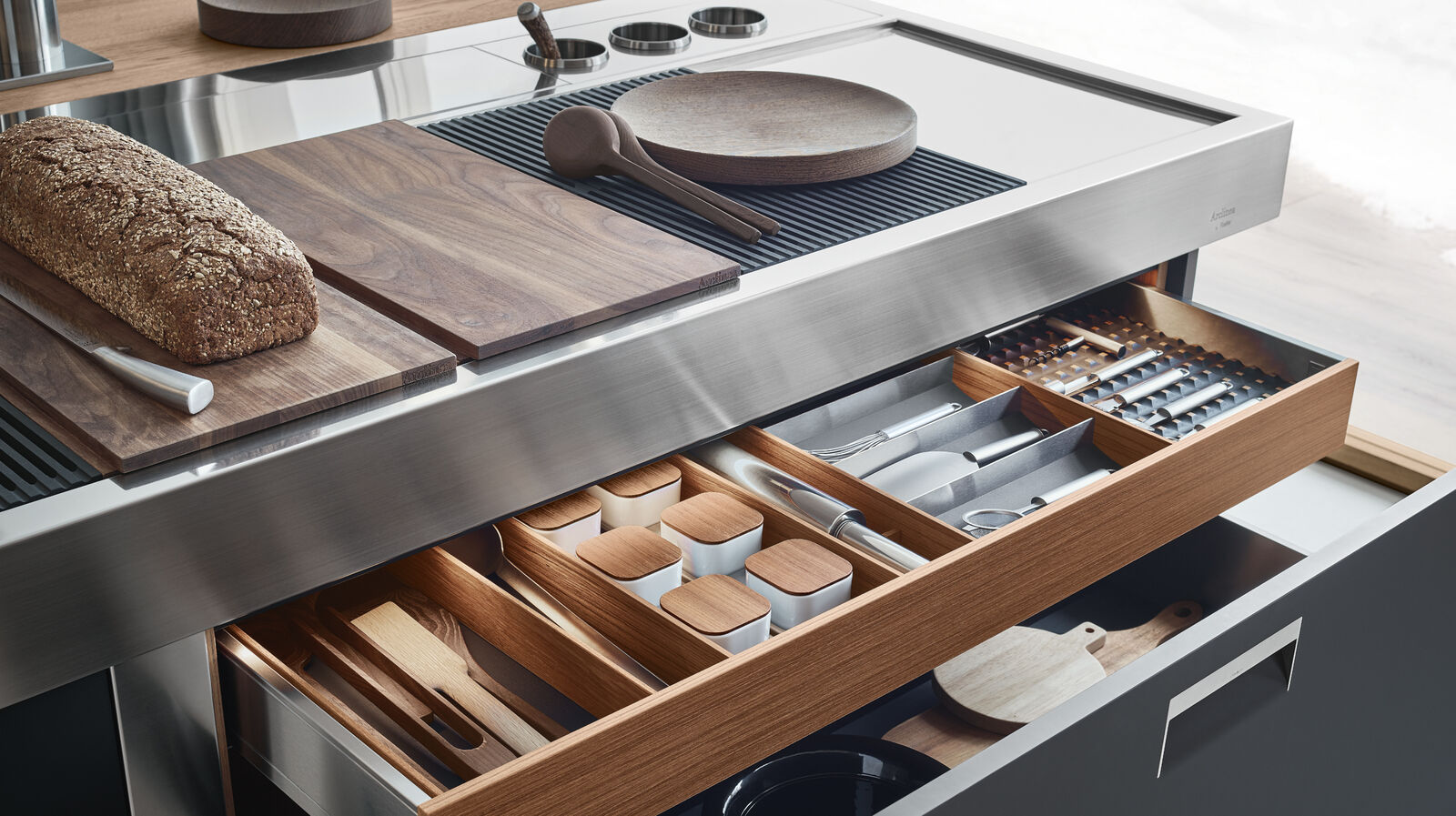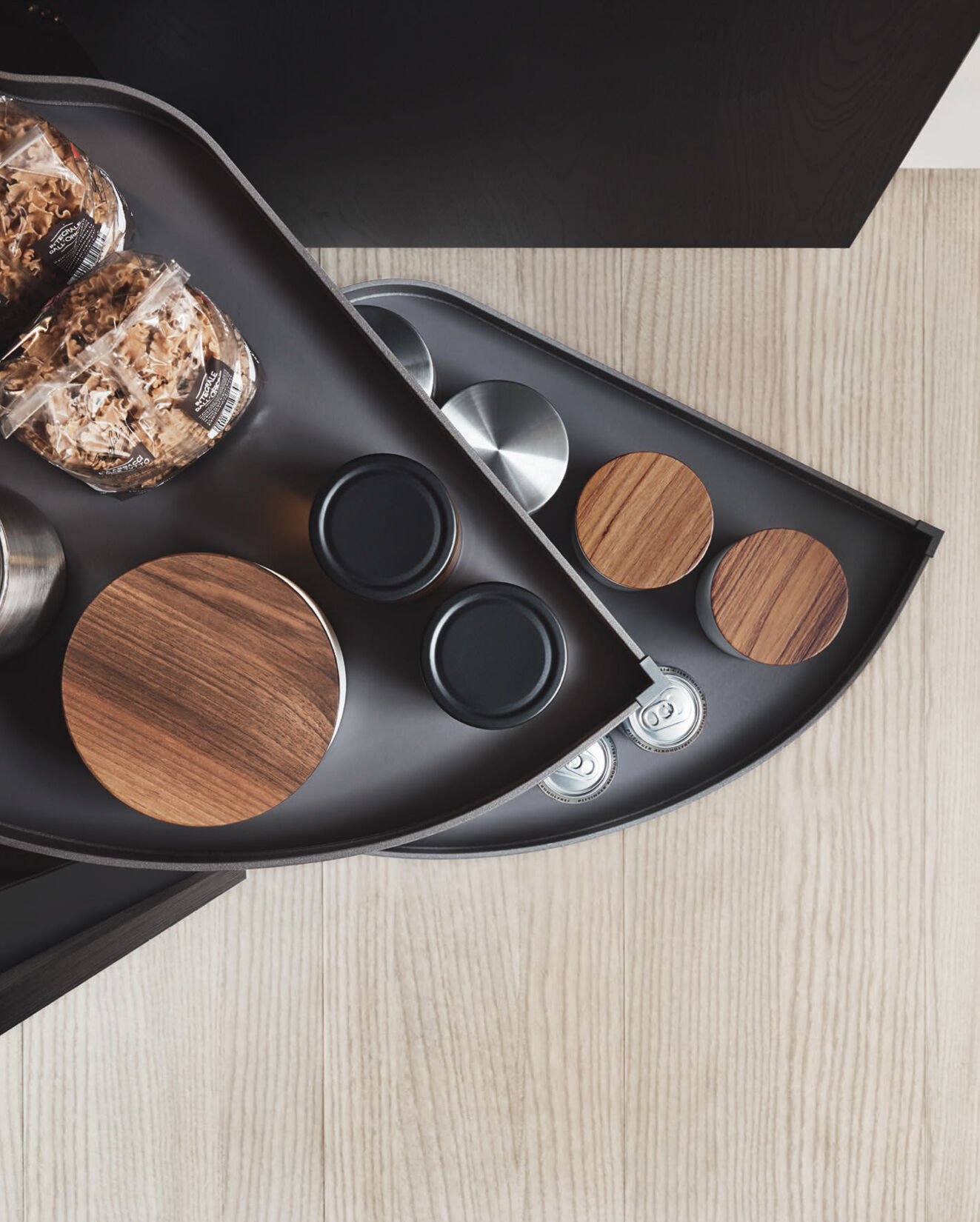The Italia model, presented in 1988, marked the beginning of the collaboration with Antonio Citterio, who would subsequently become the art director and designer of the entire collection. From the beginning, Italia embraced the aesthetics and technical solutions typical of professional kitchens, bringing their features and typical methods into the home years before this became a widespread trend: the characteristic handle, the predominant use of steel, deeper worktops with large cast iron hobs and double sinks, suspended extractor hoods and the iconic double island layout.
While staying true to the original concept, Italia has evolved over the years with the addition of new technical details, higher performing equipment and more refined finishes, confirming its vocation for maximum functional results. Discover more…
Convivium is open space, a kitchen as a dynamically organized space, where being together becomes something to be shared every day, a place where a whole series of concrete actions – storage, preparation, cooking – are converted into rituals and emotions. Aromas in the kitchen tell familiar stories or distant places, old recipes are handed down and new ones are experimented on and above all: everyone eats together around the large table.
Convivium furnishes the walls of a room that becomes warm, inviting and functional, with an island table in the center and canopy shelves that run throughout the room at picture rail height. Discover more…
The main players of Lignum et Lapis are stone, stainless steel and wood: materials used exclusively for design and project creativity. Formal study and technologies have enabled the production of islands, worktops and workbenches in stone: true physical industrial sculptures. With exclusive stave design in variable widths and distances.
Lignum et Lapis Island is a housing unit. On the one hand, guests can help with the preparation, on the other hand, which houses all the kitchen appliances, they can share cooking techniques and the joy of good food. Discover More…
A profile that separates the doors that is also a convenient solution to open the units: this is the distinguishing element on Thea, shared by other models of the past that have successfully written the story of Arclinea. Thanks to a series of details and project choices added by Antonio Citterio to the extreme practicality and aesthetic minimalism typical of handleless kitchens, Thea now enables the design of both wet and show kitchens.
This well-defined concept is in line with the trend of dividing the kitchen into two separate but complementary zones: the former focused on work, the latter more for socializing and designed for the living room. Thea's connection to the company's history and philosophy, perfectly integrated into the collection as part of one cohesive project, is even evident in the name, which is taken from the very first Arclinea kitchen in the 1960s. Discover More…
For this new project by Antonio Citterio, Arclinea starts with the essentials, with the basic principles of the kitchen, reworked: new steel technology and natural woodcarving. The extraordinary result lies in the connection between these basic principles, which show something absolutely original: new direction for interior design, new direction for kitchen design, through unprecedented combinations of materials and colours.
Principia combines a grained wood with a "raw" finish with stainless steel in the innovative colors generated with the PVD (Physical Vapor Deposition) technology process. Natural materials, innovative production technologies and artisanal details in dialogue with each other and with the evolution of work zones. The resulting new units, sideboards and dedicated storage areas are then developed in-house to become true work zones. Discover more...
